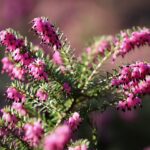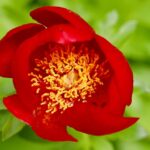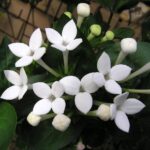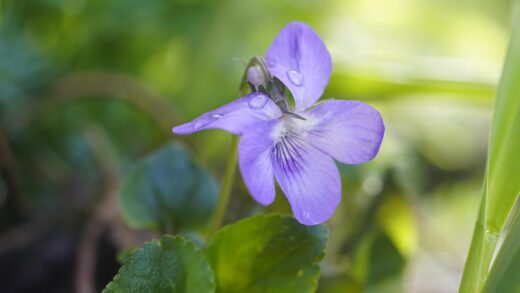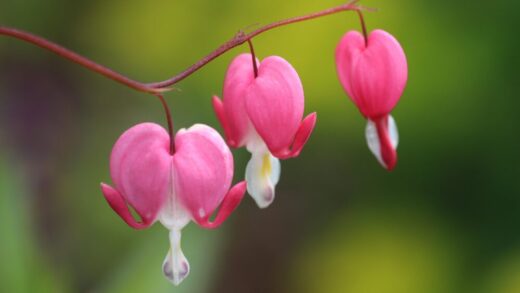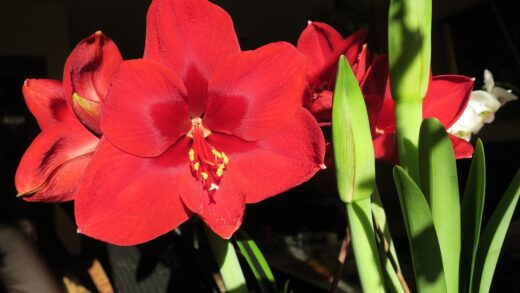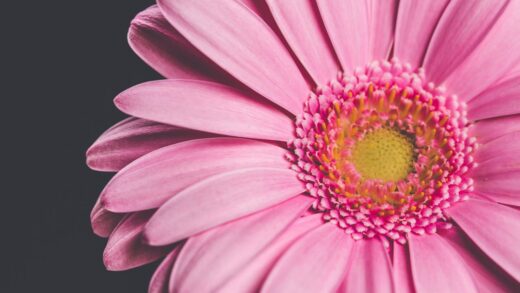Proper pruning and cutting back are essential maintenance practices that ensure the everlasting pea remains a healthy, attractive, and floriferous component of the garden. These simple techniques help to control its vigorous growth, encourage a longer and more prolific blooming season, and rejuvenate the plant annually. Unlike complex pruning required by some shrubs and trees, managing this perennial vine is a straightforward process that involves timely deadheading, occasional trimming, and a hard annual cut-back. Mastering these few key actions will keep the plant looking its best and will significantly enhance its floral display year after year.
The most fundamental pruning task for the everlasting pea is the annual hard cut-back. This is performed when the plant is dormant, either in late autumn after the first hard frost has killed the top growth, or in late winter/early spring before new shoots emerge. The latter is often preferred as the dead stems can provide some minor winter interest and help trap insulating snow around the plant’s crown. Using a sharp pair of pruning shears or loppers, all of the previous season’s stems and foliage should be cut down to about two to three inches from the ground.
This annual hard prune is vital for several reasons. Firstly, it removes all the old, dead plant material, creating a tidy appearance and making way for the fresh, new growth that will sprout from the base in spring. Secondly, it is a crucial sanitation measure, as it eliminates any overwintering fungal spores (like those of powdery mildew) or insect eggs that may be present on the old stems and leaves, thus reducing the likelihood of pest and disease problems in the new season. Finally, this process essentially resets and rejuvenates the plant each year, ensuring the growth that emerges is vigorous and healthy.
Beyond this main annual prune, the plant requires very little in terms of complex structural pruning. Its growth habit is to produce new vines from the crown each spring, which will flower and then die back in the autumn. Therefore, there is no old, woody framework to manage or shape from one year to the next. The primary focus of any in-season trimming is to maintain its size, shape, and, most importantly, to encourage continuous blooming through the practice of deadheading.
It is important to use clean and sharp tools for any pruning task to ensure clean cuts that heal quickly and minimize the risk of introducing diseases into the plant. For the thick, mature stems at the base of the plant, a sturdy pair of loppers may be more effective than standard hand pruners. After completing the winter cleanup, all the removed plant debris should be composted, unless it was heavily diseased, in which case it is better to dispose of it in the trash to prevent the spread of pathogens.
The practice of deadheading
Deadheading is the single most important in-season pruning task for maximizing the floral display of the everlasting pea. This practice involves the regular removal of spent flower clusters before they have a chance to form seed pods. The primary purpose of a plant, from a biological perspective, is to reproduce. Once it has successfully flowered and been pollinated, it will channel a significant amount of its energy into developing seeds. By removing the faded flowers, you interrupt this cycle and trick the plant into producing more blooms in another attempt to reproduce.
The process of deadheading is simple. As a flower cluster begins to fade and the petals drop, use a pair of scissors or small pruners to snip off the entire flower stalk at its base, where it joins the main vine. It is important to remove the whole stalk and not just the individual faded flowers. This regular attention prevents the formation of the characteristic pea-like seed pods. Neglecting to deadhead will signal to the plant that its reproductive mission is complete for the season, and it will often cease flowering prematurely.
Establishing a routine of deadheading every few days throughout the summer will ensure a continuous and spectacular show of color. This task can be easily combined with harvesting flowers for indoor arrangements, as the everlasting pea makes an excellent, though unscented, cut flower. The more you cut the flowers, whether for bouquets or as part of deadheading, the more the plant will be stimulated to produce new ones. This simple, ongoing task is what transforms the plant from a short-season bloomer into a floral powerhouse that performs from early summer often into early autumn.
Towards the end of the season, you may choose to stop deadheading and allow a few seed pods to develop if you wish to collect seeds for propagation. Allow the pods to mature and dry on the vine until they turn a brittle brown color. The seeds can then be harvested and stored in a cool, dry place for sowing the following spring. However, it is important to remember that allowing the plant to set seed will invariably signal the end of its flowering for that year.
Trimming for shape and control
While the main structural prune happens during dormancy, some light trimming may be necessary during the growing season to manage the plant’s vigorous growth and maintain a tidy appearance. The everlasting pea can be an exuberant climber, and it may sometimes send out wayward shoots that grow away from their intended support structure or encroach on neighboring plants. These errant stems can be dealt with in one of two ways.
The first option is to gently guide the wandering stem back towards its trellis, fence, or arbor and weave it in amongst the existing growth. If the stem is long enough, you can loosely tie it in place with soft garden twine or a plant clip until its tendrils can find a new hold. This approach helps to create a denser, fuller screen of foliage and flowers. This is the preferred method if you are trying to maximize the plant’s coverage on its support.
The second option, particularly for stems that are growing in an undesirable direction or making the plant look messy, is to simply prune them off. Using clean pruners, you can cut these stems back to a leaf node within the main body of the plant. This will not harm the plant and can help to maintain its desired size and shape, preventing it from overwhelming its allotted space or nearby companions in the garden bed. This type of trimming is purely for aesthetic control and can be done at any point during the growing season as needed.
In some cases, if a plant becomes excessively overgrown and tangled by mid-summer, a more significant renewal pruning can be performed. This might involve cutting back a third to a half of the stems to their base. This will open up the plant, improve air circulation, and encourage a fresh flush of new growth and flowers. While this is a more drastic measure, the plant is typically resilient enough to respond well, especially if it is followed by a good watering and a dose of bloom-boosting fertilizer to support its recovery.
Pruning young plants
Pruning can also play a role in the development of a young everlasting pea plant to encourage a better growth habit. When a young plant, either grown from seed or purchased from a nursery, reaches about six to eight inches in height and has several sets of leaves, it is beneficial to “pinch back” the main growing tip. This involves using your fingers or a pair of snips to remove the top inch or so of the primary stem.
This pinching action removes the apical meristem, which is the source of hormones that suppress lateral growth. Once this dominant tip is removed, the plant is stimulated to break dormancy in the axillary buds located at the base of the leaves further down the stem. This results in the plant sending out multiple side shoots from its base, rather than continuing to grow as a single, long vine.
The benefit of this early pinching is that it creates a much bushier and fuller plant right from the start. Instead of having just one or two main stems climbing the support, you will have several. A plant with a more branched and multi-stemmed structure will provide better coverage on its support and will ultimately produce significantly more flowers, as there are more stems upon which blooms can form. This simple, one-time action in the plant’s youth has a lasting impact on its overall shape and floral capacity.
This technique is most effective on young, actively growing plants. It sets the stage for a dense and well-structured vine that will be easier to manage and more aesthetically pleasing as it matures. Once these initial side shoots have developed and started to climb, you can then proceed with training them onto the support structure as you would with an un-pinched plant, enjoying the benefits of a much fuller and more floriferous specimen.
Renovating an old, overgrown plant
Over time, an established everlasting pea can sometimes become a tangled, congested mass of woody stems at the base, with growth that is less vigorous than in previous years. While the standard annual hard prune is usually sufficient to keep the plant rejuvenated, a severely neglected or overgrown clump may benefit from a more drastic renovation. This process is best carried out in the early spring, just as new growth is beginning to show.
For a renovation, you would begin by cutting all the old, dead stems back as usual. Then, closely inspect the crown of the plant. You may see a dense, woody center with new growth emerging only from the periphery. Using a sharp, clean spade or an old garden saw, you can carefully cut out and remove the old, unproductive woody center of the clump. This action will open up the crown and stimulate the plant to produce fresh new shoots from the healthier, younger sections.
Alternatively, a full division of the clump can serve as an excellent method of renovation. This involves lifting the entire root ball from the ground and splitting it into several smaller sections, as described in the propagation by division method. Replanting only the healthiest, most vigorous outer sections and discarding the old central core will effectively give you several new, rejuvenated plants. This not only revitalizes the plant but also provides you with new specimens to plant elsewhere or share.
After any such renovation, whether by removing the center or by division, it is important to provide the plant with good aftercare. Amend the soil with a fresh layer of compost and ensure the plant is well-watered as it re-establishes itself. While this process is more intensive than standard pruning, it can be a highly effective way to breathe new life into an old, tired plant, restoring it to its former glory and ensuring many more years of beautiful summer blooms.

